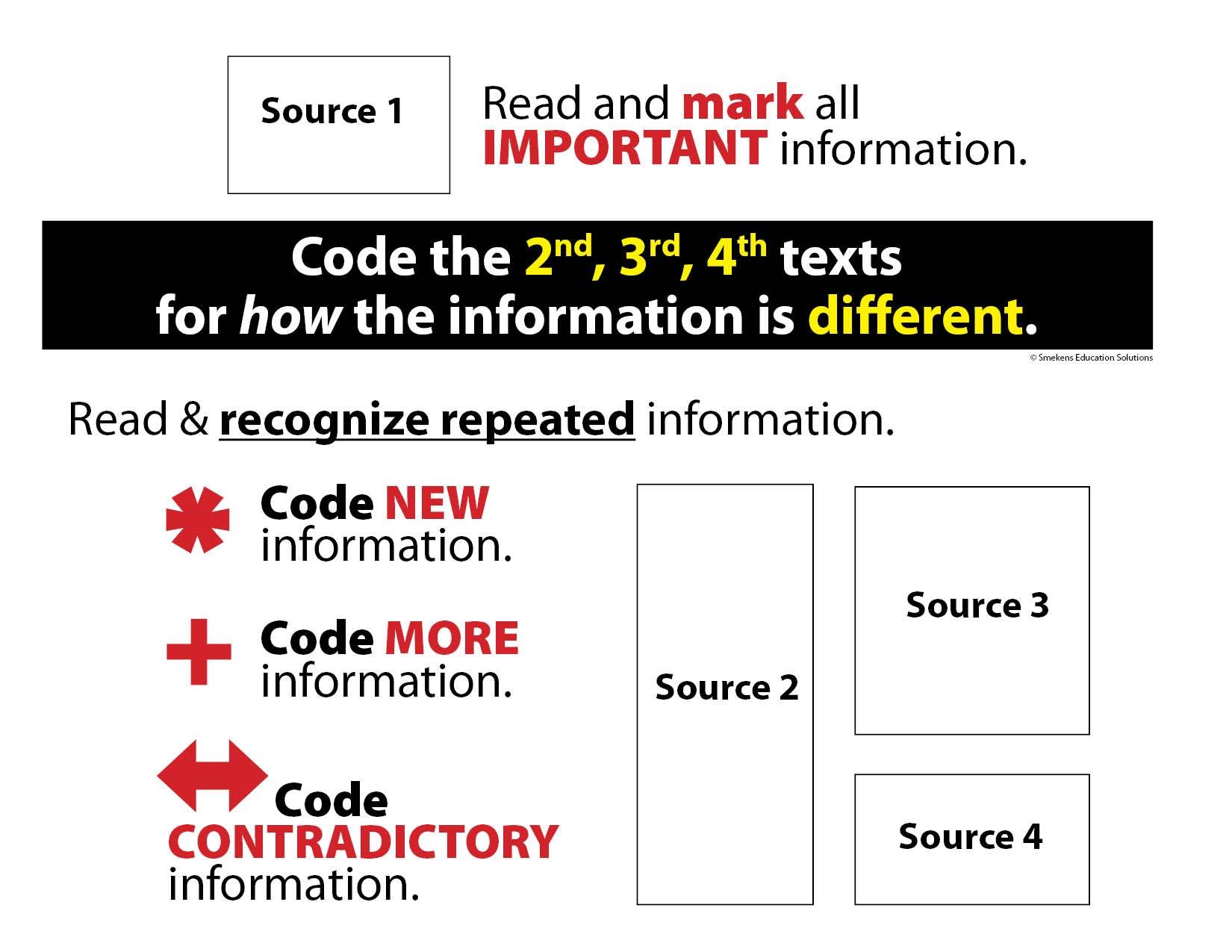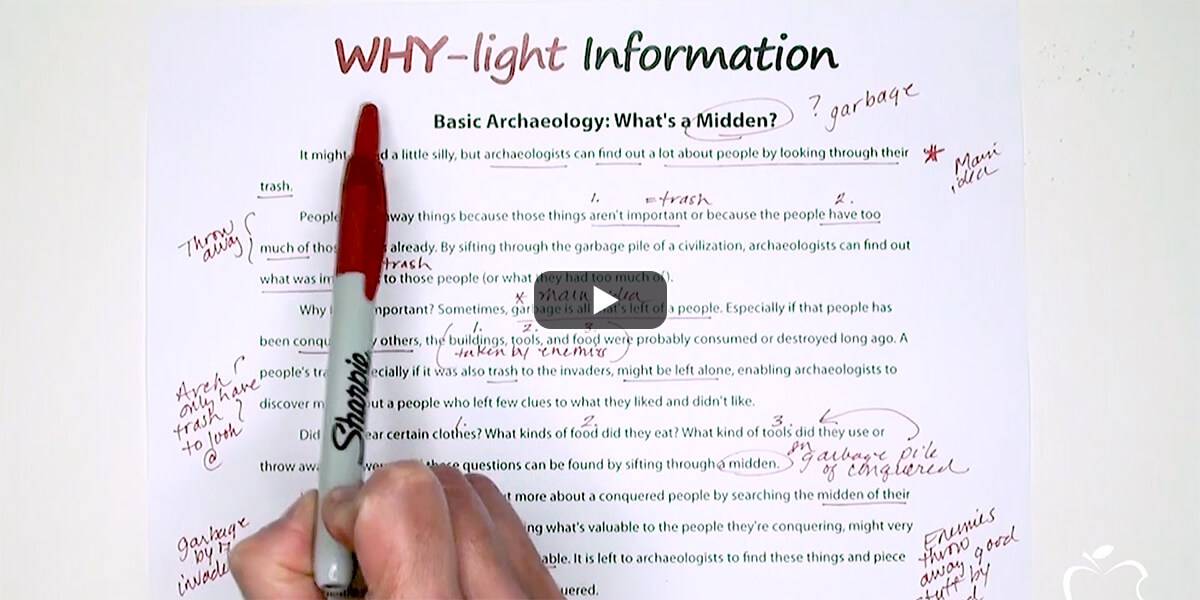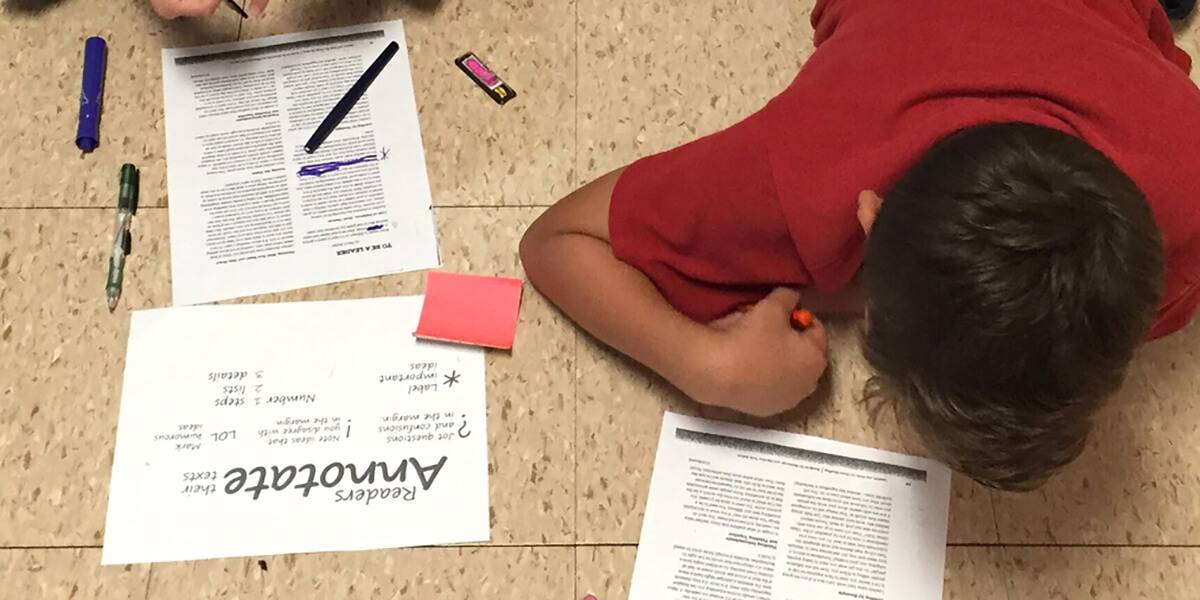Learning Center
Mark new and contradictory information
 Remember, the value of reading multiple texts is to deepen the reader’s knowledge on a single topic. In order to do this, students have to integrate what they learned in the first text with that of the subsequent texts. This is the concept of coding across sources.
Remember, the value of reading multiple texts is to deepen the reader’s knowledge on a single topic. In order to do this, students have to integrate what they learned in the first text with that of the subsequent texts. This is the concept of coding across sources.
After annotating relevant information in the first text, there is no sense marking the same information repeated within additional texts. Rather, the student should recognize information reiterated but mark only what is new and different in the second, third, and fourth texts.
After reading the first text, the reader’s purpose changes; he is to read and annotate for the following:
Note the brand-new information
Utilize an asterisk (*) or exclamation mark (!) to note big ideas or entire facets of the topic that were not mentioned in the first source. Next to each asterisk include a 2-3-word summary to label this new information.
Note the additional small details
A plus sign (+) in the margin identifies additional and specific information about an idea that was mentioned in the previous text. Students are adding just a little bit more to what they already knew. Label each plus sign with a 2-3-word summary of the subtopic or bigger idea it relates to.
Note the contradictory information
A double-sided arrow (![]() ) denotes textual details that are contradictory to those stated in the first text. This includes alternative viewpoints, conflicting statistics, opposing experts, etc. Again, note the bigger idea being contradicted with a 2-3-word summary next to the double-sided arrow.
) denotes textual details that are contradictory to those stated in the first text. This includes alternative viewpoints, conflicting statistics, opposing experts, etc. Again, note the bigger idea being contradicted with a 2-3-word summary next to the double-sided arrow.
The first text provides an initial foundation on any topic. However, as the reader advances through additional sources, he resets his reading purpose to target the new and different information that will continue to deepen his understanding.





